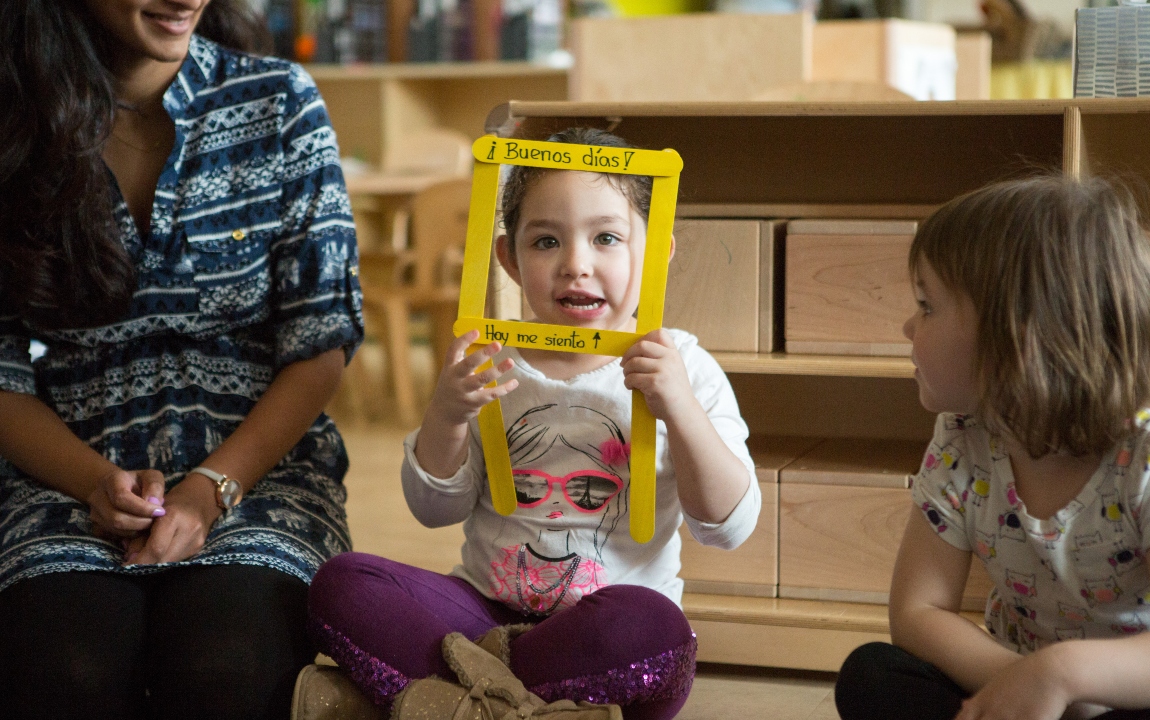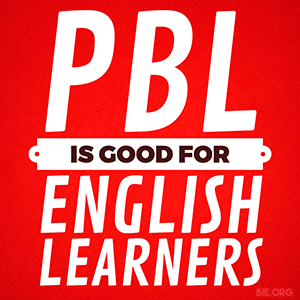
Project Based Learning is for everyone. It’s not meant to be used only for those who are done with their work. It’s not meant to be used only for those looking to be challenged. It’s meant to hoist up every student to their highest standard.
PBL is about opportunity and expectations, and to give all students access to engaging and rigorous learning we must provide scaffolds that help them achieve their best. But many teachers think that students must be able to achieve at a certain level before even attempting to jump into PBL.
English Language Learners are one of the groups that tends to be looked over when thinking about who is “ready” to do PBL. But all students are ready if armed with appropriate scaffolding by their teacher. In fact, if we look at learning in terms of growth, EL students are likely to show huge success due to how immersive PBL is in communication skills and critical thinking.
So I have to push back on this notion that a student needs a certain level of ability to be able to create, think critically, collaborate, and communicate.
All students, with guidance, can mull over, research, and respond to driving questions related to their content. Second graders of all levels can think about “What do we have to do as a school community to allow dinosaurs to enroll?” Middle schoolers reading The Giver can think about “How can we, as Givers, decide on the most important memories to bestow on the new Receivers?”
Will a student struggling with communication standards produce a perfectly fluent product? (Shrug). Maybe not. But with PBL, it’s not about the outcome, it’s about the journey and growth the students show while chugging along the path. Learning isn’t proved only at the end of the unit; students prove their growth throughout the unit.
The Need to Have Access to Engagement and Rigor
 It’s frustrating to find so many EL students stuck in drill-and-kill classes simply because they lack foundational English. Their lower level of English somehow condemns them to worksheets and Level 1 thinking expectations. But research proves that what they really need is thoughtful engagement with authentic experiences in language. And PBL, as defined by the Gold Standard, is just that.
It’s frustrating to find so many EL students stuck in drill-and-kill classes simply because they lack foundational English. Their lower level of English somehow condemns them to worksheets and Level 1 thinking expectations. But research proves that what they really need is thoughtful engagement with authentic experiences in language. And PBL, as defined by the Gold Standard, is just that.
Jennifer Miyake-Trapp, an Assistant Professor of Education at Pepperdine University and Lead Faculty of their MA TESOL Program, agrees. She believes that “engagement in PBL increases opportunities for students to authentically use and apply language and literacy skills in a meaningful context, making learning relevant and fun.”
Here’s what is true: using PBL takes more frontloading. But that is true when teaching any underrepresented population. Nevertheless, there is a misconception that just because you are providing scaffolds means you somehow aren’t teaching independent learning. This couldn’t be further from the truth. Giving EL students the resources they need to access “the good stuff” means you’re giving them the tools to improve and grow so that independence is more accessible later.
Therefore, PBL, with its focus on writing and speaking and thinking and cross-curricular reading, is just what these students need to improve quickly and deeply. Miyake-Trapp emphatically states that “In PBL, English Learners develop a sense of agency and take ownership of their learning... simultaneously practicing academic language and literacy skills while engaging in critical thinking.”
So what are some strategies that teachers can use in the classroom to give EL students more access to PBL?
8 Strategies to Scaffold PBL for EL Students:
Provide choices of accessible research.
Don’t release EL learners to research alone. Give them curated choices. Miyake-Trapp suggests, “Think podcasts, leveled books, magazine articles, online tutorials and videos, in addition to traditional classroom resources.”
Make sure all directions use visuals.
Anything that is written in text can be illustrated in icons, pictures, gifs, or videos. Better yet, try Screencasting your instructions so that students can view them over and over as needed.
Frontload key vocabulary and concepts.
Give EL students a head start to help them build schema around PBL and your content area.
Create a PBL Roadmap with visuals.
Create a timeline in the classroom with a general overview of the journey to come. “Consistently refer to this poster,” says Miyake-Trapp, “so learners have a sense of Where they've been, Where they are, and Where they're going.”
Teach collaboration.
Knowing how to work together must be taught explicitly. Have students practice the structure of discourse so they can participate in meaningful conversation and debate. Provide sentence stems. Teach different ways to come to a consensus. Give the EL students the language to advocate for themselves with peers, and give mainstream students the language and comfort to collaborate with empathy. Note: Rotate around the groups, adding your own input and listening to how EL students are interacting, as an easy and authentic informal assessment.
Don’t neglect explicit English language instruction.
PBL embraces direct instruction, small group instruction, and independent learning. That gives you ample time to pull students for extra support while other students are continuing their research or preparations. Note: Why not pull EL students to help them WITH research and preparations so they can come back to the group with something new to contribute to the whole?
Integrate students' backgrounds and experiences into the process.
Voice and choice are front-and-center in a PBL unit. Honor the connections EL students make with the content by giving them opportunities to bring their backgrounds and experiences to the product or process.
Have a PBL-focused bulletin board.
The same kind of bulletin board that helps visitors understand what’s going on in a PBL-focused room can also be used to help EL learners. Keep this board updated with current instructions and exemplars using visuals, keywords, and text. But rather than take down last week’s instructions in lieu of current directions, build on those earlier visuals and texts without taking them down so that those who progress slower can still have independent access to this information.
All students can benefit from these targeted tactics, and you’re probably using some of them without even knowing it. So don’t be nervous about engaging in PBL with your English Language Learners. The inevitable growth that you will see, and their enthusiasm for what they are learning and how they are contributing, will help you realize their strengths and potential.

